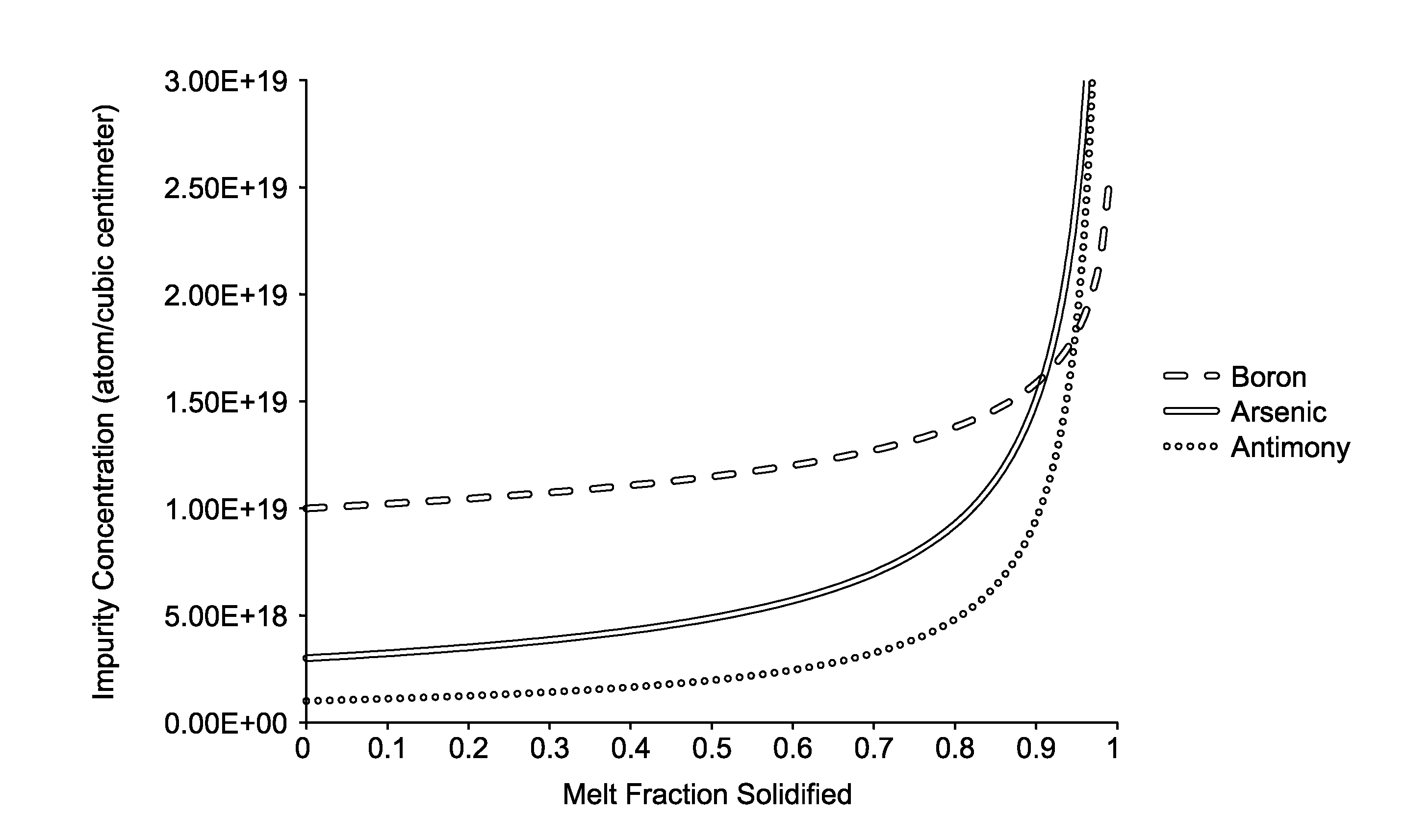Oxygen precipitation in heavily doped silicon wafers sliced from ingots grown by the czochralski method
a technology of oxygen precipitation and silicon wafers, which is applied in the direction of basic electric elements, electrical apparatus, and semiconductor devices, etc., can solve the problems of affecting the operation of devices, contaminating molten silicon with various impurities, and precipitating harmful or beneficial effects
- Summary
- Abstract
- Description
- Claims
- Application Information
AI Technical Summary
Benefits of technology
Problems solved by technology
Method used
Image
Examples
example 1
Segregation of Arsenic and Antimony in Boron-Doped Silicon Wafers
[0058]Highly boron doped single crystal silicon ingots are grown from a silicon melt by the Czochralski method. The ingots are doped with an additional dopant, arsenic or antimony. FIG. 1 is a graph depicting the expected boron, arsenic, and antimony concentrations as a fraction of the melt solidified. The data presented in the chart of FIG. 1 was obtained using the following calculation:
C(X)=C0*(1−X)(kseg-1)
wherein:
[0059]C(X) is the dopant concentration at a point along the constant diameter portion of the ingot;
[0060]C0 is the initial dopant concentration at the beginning of the constant diameter portion of the ingot;
[0061]X is the fraction of the ingot that is frozen;
[0062]kseg is the segregation coefficient.
[0063]Since boron has a segregation coefficient of 0.80, the concentration of boron as a function of the fraction of the melt solidified is relatively constant throughout most of the ingot growth. As can be see...
PUM
 Login to View More
Login to View More Abstract
Description
Claims
Application Information
 Login to View More
Login to View More - R&D
- Intellectual Property
- Life Sciences
- Materials
- Tech Scout
- Unparalleled Data Quality
- Higher Quality Content
- 60% Fewer Hallucinations
Browse by: Latest US Patents, China's latest patents, Technical Efficacy Thesaurus, Application Domain, Technology Topic, Popular Technical Reports.
© 2025 PatSnap. All rights reserved.Legal|Privacy policy|Modern Slavery Act Transparency Statement|Sitemap|About US| Contact US: help@patsnap.com



